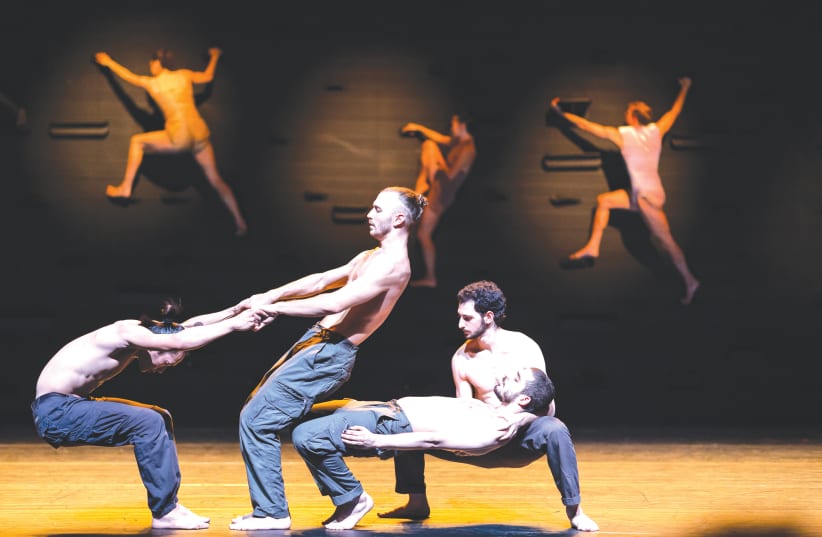Three years had passed since Ohad Naharin presented his previous dance – one of his most ingenious works – 2019. This long delay, caused mainly due to hiatus during the pandemic, raised high expectations for a new Naharin creation for Batsheva, Israel’s most celebrated dance company.
For the first time in Ohad Naharin’s long creative career, he invited Ariel Cohen, an ex-Batsheva dancer, to work with him and the company as a creative partner with the rest of the dancers of MOMO, which premiered this week. Unfortunately, the viewer can’t evaluate Cohen’s specific contributions within their collaboration, which might clarify some structural issues.
What was the dance?
Four bare-chested male dancers in tight unison formation trotted from side to side of the stage, rarely changing their pose or direction as they encircled the space. Long moments passed before seven more dancers joined the floor, each with distinct individualistic traits; rhythms, energy, gestures and outfits. Slowly, they were all over, challenging our multi-focal attention. Their hindered visual noise often turned into a chaotic blare when each worried about his own space inside their virtual bubble concurrently. Fortunately, as if their power was turned off, they froze, while each had a chance to do his short solos that summed up their “on” phase.
All that time the male quartet kept pace and acted as a vibrant unit with impressive athletic stamina showering persistence and maintaining a clear artistic fashion derived out of varied cultural sources and disciples, with east-west folkloristic overtones along some street wisdom. They seemed to form the crucial supporting pillar of the overall loose structure of the work. In contrast to the party of seven roaming souls, so fully attentive to their uniqueness and passions, the mail quartet kept its own hold through delightfully rich interaction as a group, relying on fellows’ support and freedom within their familiarity with their unit.
Theoretically, the sharp dichotomy between both groups could’ve worked toward more complex, layered artistic creation. But did it? Tight-minded quartet enjoyed time and room to work on details and nuances within their supposedly rigid somatic rules. Yet in fact, they found creative ways to expand their expressions and inevitably, their freedom as performers.
One must salute the courage and optimism to plant MOMO on two universes, or ladders that barely meet, since the majority of the performers accentuated their extremist GaGa heritage, without the necessary structural grid that limits the loose, somewhat chaotic stage. One could also appreciate single bright moments that aimed to contain the loose formation with repeated momentary freezes and bold upward salutations while the soundtrack indicates a singular, eerie noise.
Now is the moment to praise the idea to use the vertical stage, namely the back black wall which was turned into a climbing wall and was used in owing inspired ways accompanied by creative lighting design. Inevitably It brought to mind Rami Be’er’ timeless creation Aide Memoire (1994), as dancers moved on the wood panels which covered the back wall.
Kudos to Maxim Warrat and his sensitive ear who designed and edited the music for MOMO, as he often does.
